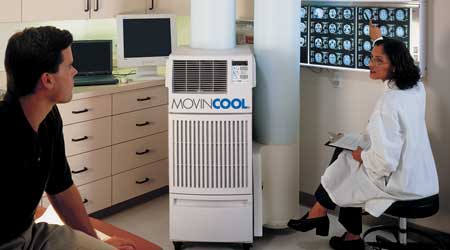Identifying Rental Options and Finding Solutions
Whether the equipment provides cooling, heating or power, building an effective plan is essential for success
From planned shutdowns and unplanned outages to heat waves and cold snaps, institutional and commercial facilities must have the options on hand to address a host of unexpected or out-of-the ordinary events. Among the most commonly rented pieces of equipment are those that deliver utilities that are essential to building function — cooling, heating and power.
By taking a closer look at rental considerations for each of these needs, managers can put together a plan that enables their facilities to successfully weather both planned activities and unplanned outages.
Cooling considerations
Whether a facility needs temporary cooling for an unexpected breakdown or for scheduled maintenance downtime, managers have options that are available by the day, week, or longer. Spot coolers provide focused, effective cooling for specific personnel, equipment, information technology closets, or processes without the unnecessary expense of cooling entire building spaces.
Rental equipment options range from a 10,000 Btu, 120/240-volt spot cooler to a 1,200-ton building cooling system with maximum flow of 3,600 gallons per minute (gpm), six fans and motors, and a 480-volt, three-phase, 150-amp power supply. A 1-ton unit can cool 400 square feet of insulated space or 200 square feet of uninsulated space.
During specification, managers must consider the space that will house the unit. Installation requires portability, a power supply, and an extension cord long enough to reach from the cooler to the power source. Air-cooled units available from 1 ton to 5 tons also require a hot-air exhaust duct and a cool-air discharge duct to direct cooled air flow to people or objects. A condensate pump and hose discharges the dehumidification condensate water from the unit to the sewer.
Cooling an entire building is much more complicated. The application requires chillers; water-cooled towers or air-cooled condensers; fans, pumps, variable-speed drives, and controls; coils and heat exchangers; valves; and interconnecting distribution piping. Water-cooled chillers operate on about one-half the power of air-cooled chillers, which might allow the temporary chiller to run off the building power system and eliminate the cost of renting a generator. the y do require more maintenance, such as cleaning cooling tower nozzles to maintain efficiency.
Additional approaches for supplemental cooling include temporary cooling or ice storage, which are good choices for peak power shaving – shifting the generation to off hours to lower the peak demand on which the utility company rate is based.
Hot issues
Temporary heating applications can address such needs as worker comfort and safety, planned outages, emergencies, temporary shelter heating, makeup air heating, maintaining proper ambient temperature for concrete pouring, and ground thawing.
Direct-fired heaters are very efficient and are widely used for outdoor applications, as well as indoor application with plenty of air circulation. Among the considerations managers must plan for when specifying temporary heating rentals are:
• volts and phases, from 115 volts single phase to 480 volts three phase
• amps, the higher the voltage available, the lower the amps draw on the power supply
• Btu up to 4 million
• volume in cubic feet a minute
• fuel options, including natural gas or propane
• gas connection, typically ¾- or 1-inch pipe size for gas supply
• physical dimensions of the required heater, a consideration for entry into limited work spaces.
A variable output 480-volt, three-phase electric heater offers controls for several space choices — 60 kW, 256,000 Btu; 90 kW, 386,000 Btu; and 150 kW, 512,000 Btu — for heating spaces up to 11,000 square feet.
Related Topics:













